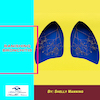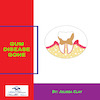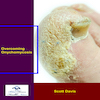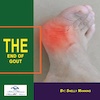 When it comes to chronic bronchitis, everyone seems to put the blame #1 on smoking (past or present).
When it comes to chronic bronchitis, everyone seems to put the blame #1 on smoking (past or present).
Yeah, we all know smoking is bad for you.
But your workplace carries almost 50% of the blame (whether you smoke or not), according to a new study in Occupational & Environmental Medicine.
And you can heal it without changing your workplace—or even without stopping smoking.
Most of us spend a third of our adult lives at work, breathing whatever is in the air around us.
For some occupations, this means regular exposure to chemical vapors, gases, dusts, and fumes (VGDF) that can irritate and damage our lungs over time.
Researchers wanted to understand just how much these workplace exposures might contribute to chronic bronchitis.
The research took place in Telemark County, a region in southern Norway.
It included over 20,000 people between the ages of 16 and 55. The scientists used a two-step process:
-
1. First, they asked participants to complete a questionnaire about their health and workplace conditions.
2. Then, they matched participants’ job titles with the Nordic Job Exposure Matrix (N-JEM) tool. This tool helps identify what substances people are likely exposed to in different occupations.
Chronic bronchitis was defined in this study as a cough that brings up mucus and lasts for at least three months a year for two years in a row.
After collecting all this information, the researchers analyzed the data, accounting for important factors like age, sex, and smoking status that could affect the results.
Their findings were shocking:
-
1. 5.3% of participants had chronic bronchitis symptoms.
2. People who reported daily exposure to VGDF were 3.6 times more likely to have chronic bronchitis than those without exposure.
3. Even occasional workplace exposure to VGDF increased the risk by 1.6 times.
4. Among people who had smoked at some point, the link between job-related irritants and bronchitis was particularly strong.
5. Using the job exposure matrix (rather than self-reports), chronic bronchitis was still clearly connected to irritants. But only among smokers.
6. According to the job exposure matrix, among ever-smokers (current or former), those with workplace exposure to irritants were 1.4 times more likely to have chronic bronchitis.
7. The researchers estimated that workplace exposure was responsible for 41% of all chronic bronchitis cases — 49% among people who had smoked and 37% among those who never smoked.
If you work where you’re regularly breathing in dust, gas, fumes, or chemical vapors (think construction, cleaning, manufacturing, or even hairdressing), you might want to wear a mask and campaign for better workplace ventilation.
Now that we know why you suffer from chronic bronchitis, let’s look at how to heal it.

 Overcoming IBD
Overcoming IBD Multiple Sclerosis
Multiple Sclerosis Banishing Bronchitis
Banishing Bronchitis Gum Disease Gone
Gum Disease Gone Overcoming Onychomycosis
Overcoming Onychomycosis Neuropathy No More
Neuropathy No More The Prostate Protocol
The Prostate Protocol Brain Booster
Brain Booster
 Ironbound
Ironbound
 Solution for Shingles
Solution for Shingles
 The Bone Density Solution
The Bone Density Solution
 The Ultimate Healing Protocol
The Ultimate Healing Protocol
 The Parkinson's Protocol
The Parkinson's Protocol
 The Chronic Kidney Disease Solution
The Chronic Kidney Disease Solution
 Overthrowing Anxiety
Overthrowing Anxiety The Fatty Liver Solution
The Fatty Liver Solution The Hypothyroidism Solution
The Hypothyroidism Solution
 The End of Gout
The End of Gout The Blood Pressure Program
The Blood Pressure Program
 The Oxigized Cholesterol Strategy
The Oxigized Cholesterol Strategy
 Stop Snoring And Sleep Apnea Program
Stop Snoring And Sleep Apnea Program
 The Arthritis Strategy
The Arthritis Strategy The Vertigo & Dizziness Program
The Vertigo & Dizziness Program The 3-Step Diabetes Strategy
The 3-Step Diabetes Strategy Hemorrhoids Healing Protocol
Hemorrhoids Healing Protocol The Erectile Dysfunction Master
The Erectile Dysfunction Master Weight Loss Breeze
Weight Loss Breeze The IBS Program
The IBS Program The Insomnia Program
The Insomnia Program The Migraine and Headache Program
The Migraine and Headache Program The Neck Pain Solution
The Neck Pain Solution The Menopause Solution
The Menopause Solution The Ejaculation Master
The Ejaculation Master The TMJ Solution
The TMJ Solution The Acid Reflux Solution
The Acid Reflux Solution The Fibromyalgia Solution
The Fibromyalgia Solution The Psoriasis Strategy
The Psoriasis Strategy